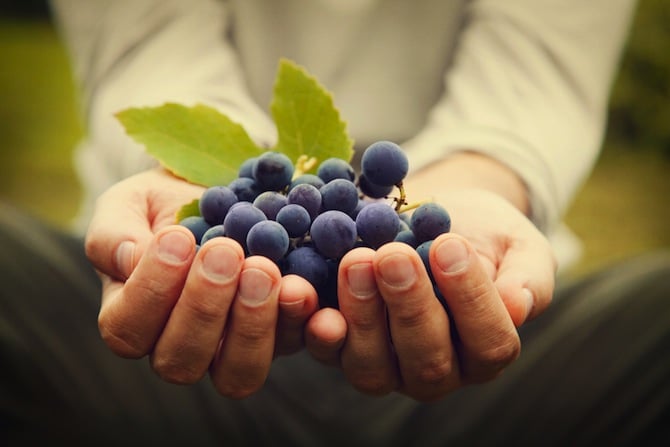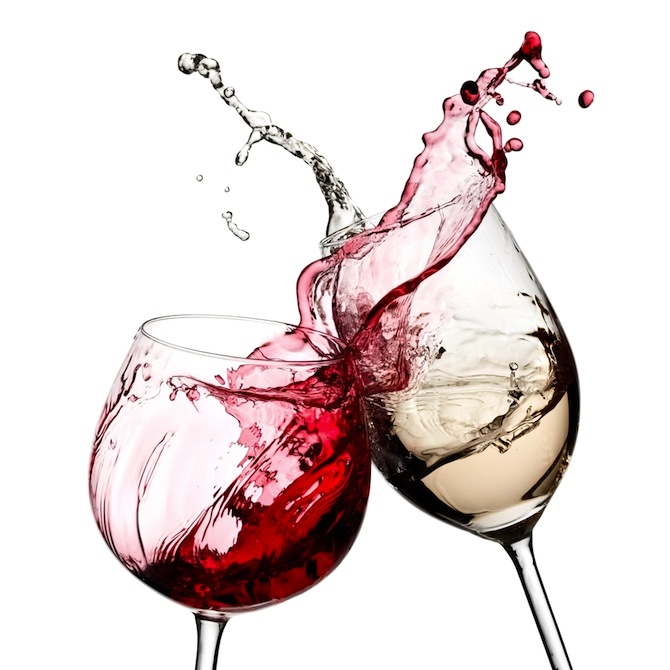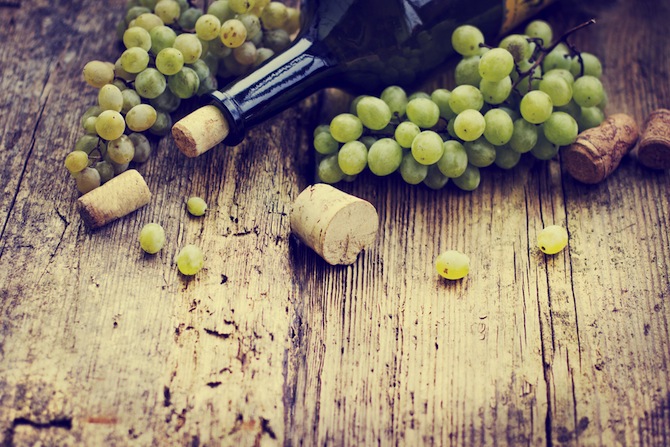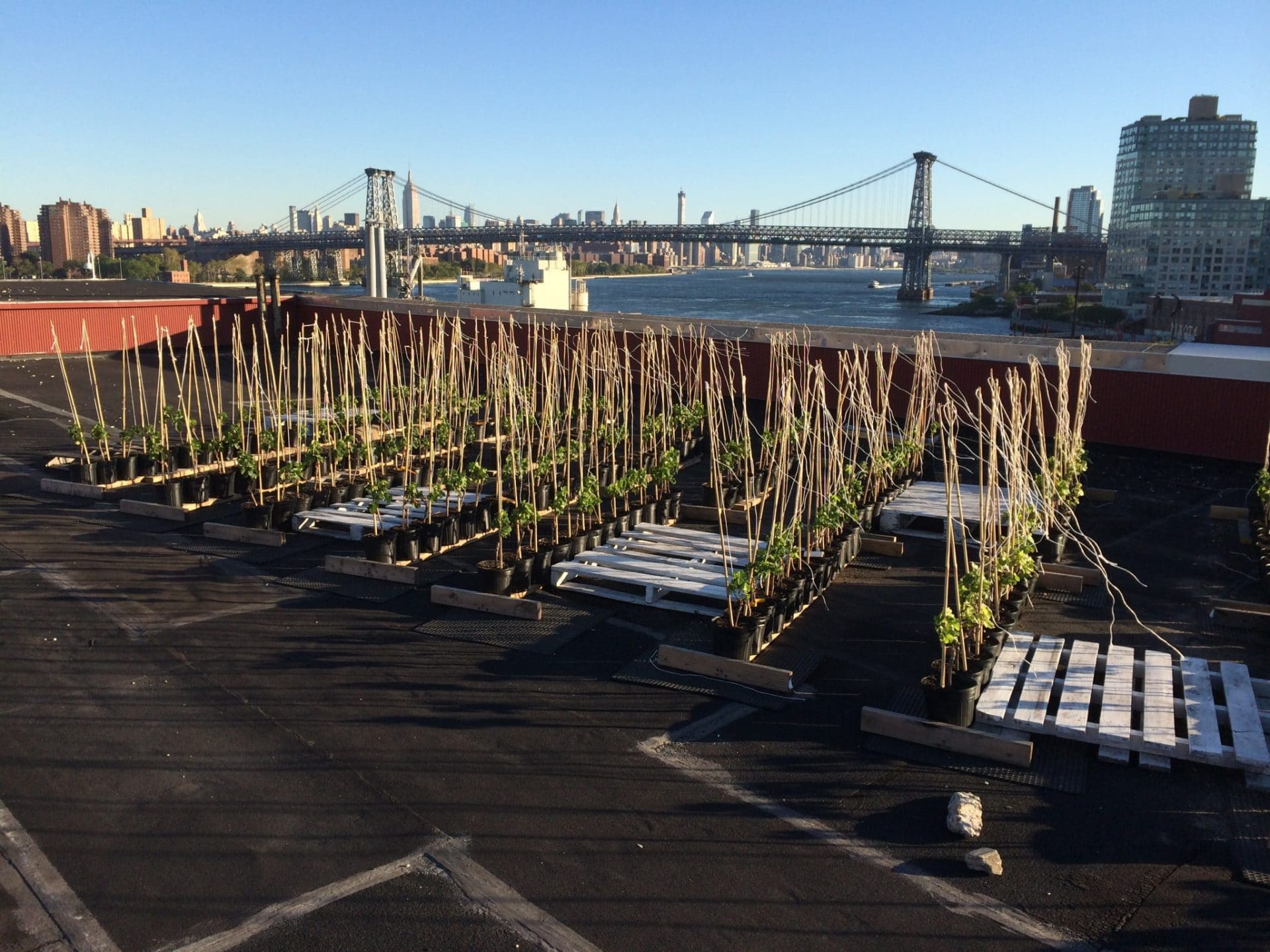
Terroir. It’s an important wine term that essentially refers to the landscape, climate, soil, sun exposure and winemaking traditions of a vineyard, and how that affects wine grapes. When you taste the terroir of a wine you’re tasting the land and conditions from where it came from. There isn’t one single type of terroir that makes great wine. For example, New World wines tend to be sweeter, oakier, more fruit forward and higher in alcohol, while Old World Wines are usually the exact opposite and higher in acidity. One isn’t necessarily better than the other — although everyone has opinions — but it depends on what you like.
This can lead us to start thinking about the different landscapes that vineyards grow on. While it’s difficult to find two vineyards with the exact same characteristics, there is one thing vineyards around the world all have in common: they’re planted on land, and typically in a rustic countryside setting.
This notion of vineyards being planted in soils on the ground is now being challenged, as Rooftop Reds brings the world’s first commercially viable rooftop vineyards to New York City. Best of all, they’re using already-existing urban structures to do so, re-purposing vacant space to create something sustainable, and producing the wine at the local Red Hook Winery.
Not surprisingly, this project is taking place in Brooklyn, a borough of New York City known for its innovative sustainable practices. While hobbyists have planted a few rooftop vines in the past, this will be the first instance of vineyards that will be grown on such a large scale they can be use for commercial purposes.

The Beginning Of Rooftop Reds
According to Devin Shomaker, one of the Rooftop Reds founders, he worked in the corporate world for a number of years, feeling dispassionate about his jobs. He decided to make a change and began working on the side at a wine bar in Washington DC, near his home city of Arlington, Virginia, soon realizing he loved doing that much more than his corporate endeavors. In 2012, he decided to make the switch for real, enrolling in the Finger Lakes Community College to get a degree from their two-year Viticulture and Wine Technology program.
Devin laughs. “When I was there I thought, ‘I’ve never been this focused on school.’ Plus, there weren’t a lot of good job opportunities in Upstate New York for a part-time student. So, I decided to build my own business — Rooftop Reds. It truly grew out of my own passions and interests in urban agriculture.”
Devin had always had his eyes set on Brooklyn, a place where the concept of urban agriculture has such energy behind it. Moreover, his brother, Thomas, lived in Brooklyn’s Windsor Terrace neighborhood, which is where the brothers began the company through a pilot project growing 50 rooftop vines, planted in early May of 2013. This initial vineyard allowed them to analyze disease pressure, soil medium space and other aspects of varietal growing before they really took their idea to the commercial level.

It was challenging, especially as the rooftop was located near Prospect Park West — a complete ridge — and about 500 yards (1500 feet) away from Greenwood Cemetery, which is home to Battle Hill, the highest point in Brooklyn at 200 feet (61 meters) above sea level and prone to extreme gusts of winds. Despite the weather challenges, they learned a lot about what grape vines could withstand in Brooklyn, were able to successfully grow a small plot of vineyards. Thus, their bright idea was set into motion.
Why Rooftop Vineyards?
According to an article on SUNY Big Ideas, wine is the drink of choice for Americans, consuming over 850 million gallons each year and there being more than 9,000 wineries and counting in the USA. While Napa Valley is undoubtedly the country’s largest wine producing region, New York’s Long Island, Finger Lakes and Hudson Valley regions are quickly emerging. And with the creation of Rooftop Reds, New York City itself may eventually be on that list, with grapes actually grown within. It’s not too unlikely, as, according to this same article, over 80% of the US population will live in an urban setting by 2050. This means we’ll need solutions to assure local food production in urban settings increases, which can be helped with the growth of urban farms and vineyards.
Growing Partners
Along with the Shomaker brothers, there are two other founders: Evan Miles and Chris Papalia, both located in the Finger Lakes region. Miles’ family owns the esteemed 160-acre vineyard estate Miles Wine Cellars on the West Bank of Seneca Lake. For the time being, this is where all of Rooftop Reds production and grape purchasing is coming from — a separate endeavor from their true urban rooftop wines, coming soon.
Says Devin, “It’s a really perfect relationship for us to have estate-grown and estate-controlled grapes within our management team. It’s a major asset because we’re starting up production before the urban vineyards begin producing a crop, which we’re going to then sell and self-distribute in Grow NYC markets in Spring 2015.”

This cohesive network in both the Finger Lakes and New York City has allowed them to stretch over a large section of New York State. Representing the Finger Lakes Wine Region has always been a goal for Devin and the Rooftop Reds team, as this is the community where they were educated in viticulture as well as the community that has supported them since the beginning.
In fact, it was through the Finger Lakes ‘ partnership with Cornell University — located less than an hour away in Ithaca — that the Rooftop Reds team got hooked up with one of the country’s top viticulturists, Alan Lakso. Lakso has been with Cornell since 1973, and focuses on studying how vine development interacts with the surrounding environment and culture of the area where they’re grown.
For those who are picturing the Rooftop Reds operation to be simple plant-and-wait project, think again. Having Lakso helping them in the development of their Brooklyn Navy Yard rooftop vineyard has been crucial to the brand’s success and creating a quality wine product, as he helped with the development of their urban planter box design.
Explains Devin, “The urban vineyard we have now that’s in a nursery format in the Brooklyn Navy Yard (but not in the final location) is in its first year growth stage. Then we’re taking those vines next year and transplanting them to our urban planter boxes — which we designed with the help of Cornell University and industry leaders in the Finger Lakes — to the Brooklyn Navy Yard for multi-year growth of our grape vines in this system. We’re projecting 20 years of healthy grape vine growth in these planter boxes. This is our next step.”
To further ensure the success and safety of Rooftop Reds, the group invested $6,000 in a structural analysis of building 275’s — their ultimate address — rooftop, receiving internal approval from the Brooklyn Navy Yard as well as from an outside engineering firm.

Brooklyn Navy Yard
What’s interesting about Rooftop Reds isn’t just the concept of the off-the-group vines, but the location of the historic Brooklyn Navy Yard, once producing war ships for the US Navy from 1806 to 1966. If Devin’s gut feeling is right, the Brooklyn Navy Yard is on the verge of becoming a hub for small artisan businesses, like theirs. Within this 300+ acre industrial complex, there are more than 300 businesses, mainly focused on light industrial and manufacturing, as well as some offices and storage, but also photography studios, specialty book shops, culinary entrepreneurs, antique furniture stores, event spaces, art galleries and, of course, Rooftop Reds.
And in true Brooklyn fashion, the Brooklyn Navy Yard is committed to sustainability, with initiatives like requiring new businesses to have be Certified LEED Silver (at minimum); using green technologies like Energy Star roofs and energy efficient lighting; using solar-powered trash compactors and street lights; and using low-emission and hybrid vehicles in their fleet.

Hobby vs Commercial Rooftop Vineyards
One thing that’s important to understand when talking about Rooftop Reds is the difference between hobby rooftop vineyards and commercial rooftop vineyards. Rooftop Reds will be the world’s first commercially-viable rooftop vineyard. That’s not to say nobody else has grown grape vines on their roofs — even Brooklyn Winery did it in 2013; however, this was on a much smaller scale, cutting wine barrels they weren’t going to use anymore and planting about 25 grape vines.
What Rooftop Reds is doing is on a whole different level.
“Some businesses just do it for a blog post write-up, while others just do it for fun. They’re not really working on defining their soil, doing nutrient and water relations analysis, doing feed analysis, doing temperature monitoring at different times of day. They’re not looking at the future of setting up a trellis system, of how to actually manage these vines viticulturally, they didn’t look at the clonal selection or species of the grape vines. It’s a hobbyist, kind of fun thing for these people to do. For us, however, this is a business venture and we want to make it commercially viable.”
With 240 vines in their vineyard, we can see the difference.
Challenges
While study results were hopeful and showed the Rooftop Reds team what they needed to do to be successful, the project doesn’t come without challenges. First of all, while not as bad, strong wind from the East River — which the Brooklyn Navy Yard sits on — is still something the team needs to take into account. Additionally, the current nursery vineyard was planted in gallon buckets, making the biggest challenge water relations and the need to make sure vines are receiving the nutrients they need each day. The soil medium with this is even smaller than with the pilot project, meaning if the team isn’t on top of the soil moisture and pressure, the vines can dry out.
It’s not all bad news for Rooftop Reds, though. According to Devin, “The lovely thing about being in an urban environment is our disease pressure is drastically reduced due to being surrounded by a concrete jungle. The need for sprays has been almost non-existant. We’ve only done one spray of a really light non-restrictive bpa-free fungicide. We absolutely have no disease pressure at this time. This is absolutely absurd from a business management standpoint.”

The First Rooftop Vintage
For the Rooftop Reds brand, their first 2016 harvest from the Brooklyn Navy Yard should be ready to drink by fall 2017 — although small private tours made by appointment are scheduled to be offered by summer 2015. Fittingly, their first varietals will be the major Bordeaux grapes: cabernet franc, petit verdot, malbec, merlot, and, their most widely planted grape, cabernet sauvignon. Of the 240 vines in their vineyard, 100 are cabernet sauvignon.
“This is a varietal we’ve seen really great growth rate from and responsiveness from the conditions on the rooftop, which was predicted,” says Devin.
One major goal of Rooftop Reds is to also educate inner city youths about agriculture and viticulture, and show them there is more out there than what’s initially apparent living in a concrete jungle.
Says Devin, “It was always my desire to expose urban dwellers to viticulture and the greater wine industry. I grew up two stop lights from downtown Washington, DC and as a result was quite ignorant of this dynamic and ever growing industry. If I can help the next generation discover a passion in wine and the wine industry at an earlier age than I did myself; I consider that a big win.”
Upcoming Events & Experiences
In the meantime, Rooftop Reds is hosting a number of events prior to opening to spread their name to the public and get the word out about urban wineries. For example, on September 19 they’ll be hosting “New Food Startups At the Brooklyn Navy Yard” in partnership with Drive Change, a nonprofit dedicated to empowering formerly incarcerated youth. Then on September 26 they’re putting on “Wine & Cheese Tasting: Urban Wineries” which will feature wines and nibbles sourced from the five boroughs.
As mentioned above, they’re also creating wine using Finger Lakes grapes, like a bourbon barrel-aged port made from cabernet franc grapes aged in bourbon barrels from Brooklyn distilleries (ready to drink by summer 2015) as well as an aromatic white blend of Chardonnay and Gewürztraminer grapes (ready to drink in spring 2015), available at GrowNYC Markets. Moreover, you can visit Devin at the Red Hook Winery where he also works, and can provide you with a guided tasting experience and a taste of Brooklyn. For more information, click here to contact the Rooftop Reds team.
I for one, am extremely excited about Rooftop Reds, not only because I’m a sommelier — you can read more about this in our Epicure & Culture original series, Sommelier Certification — but because it shows that even when it seems like everything has been done already and there can’t possibly be anymore new ideas in the world, there is. And I don’t mean giant companies like Google and Microsoft who have the money to pay for innovation, but by the average public who are simply following their passions and seeing where they lead.
In Brooklyn I’m seeing this a lot, and it truly makes me proud of my borough.
What do you think about Rooftop Reds?
Looking for a NYC tour guide?
Also Check Out:
Bee Pollinating Beautiful Bloom In NYC’s Central Park [Photo]
Sip & Snack: Exploring Moravian Cookie Culture & Local Wine Pairing In North Carolina
Quirky Travel: Top 15 Unusual Wine Tastings And Experiences Around The World
Jessica Festa
Latest posts by Jessica Festa (see all)
- A Culturally-Immersive Adventure In Mongolia’s Altai Mountains - Jul 8, 2023
- This Recipe Sharing Platform Supports Women In The Culinary Industry (Labneh Recipe Included!) - Nov 5, 2020
- Hiking The Mohare Danda Community Eco-Trek In Nepal - Jun 3, 2020
- 6 Important Questions For Choosing A Responsible Yoga Retreat - May 18, 2020
- How To Create & Grow A Profitable Blogging Business (Ethically) - Jan 18, 2020





This was really interesting to read about. I had no idea there was a rooftop winery in NYC. We definitely need to check this out the next time we go to Brooklyn! Love to see the innovative sustainability in the wine industry.